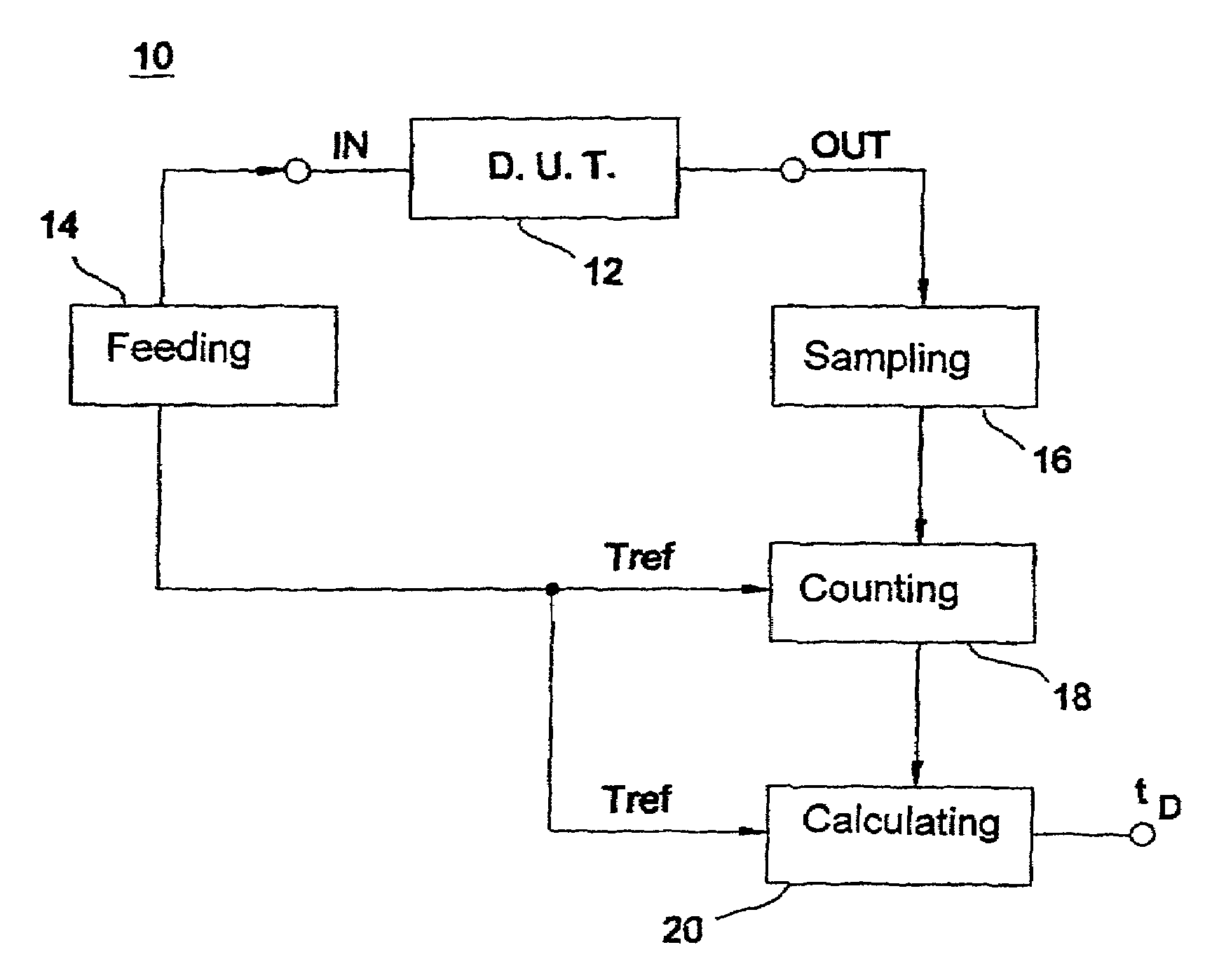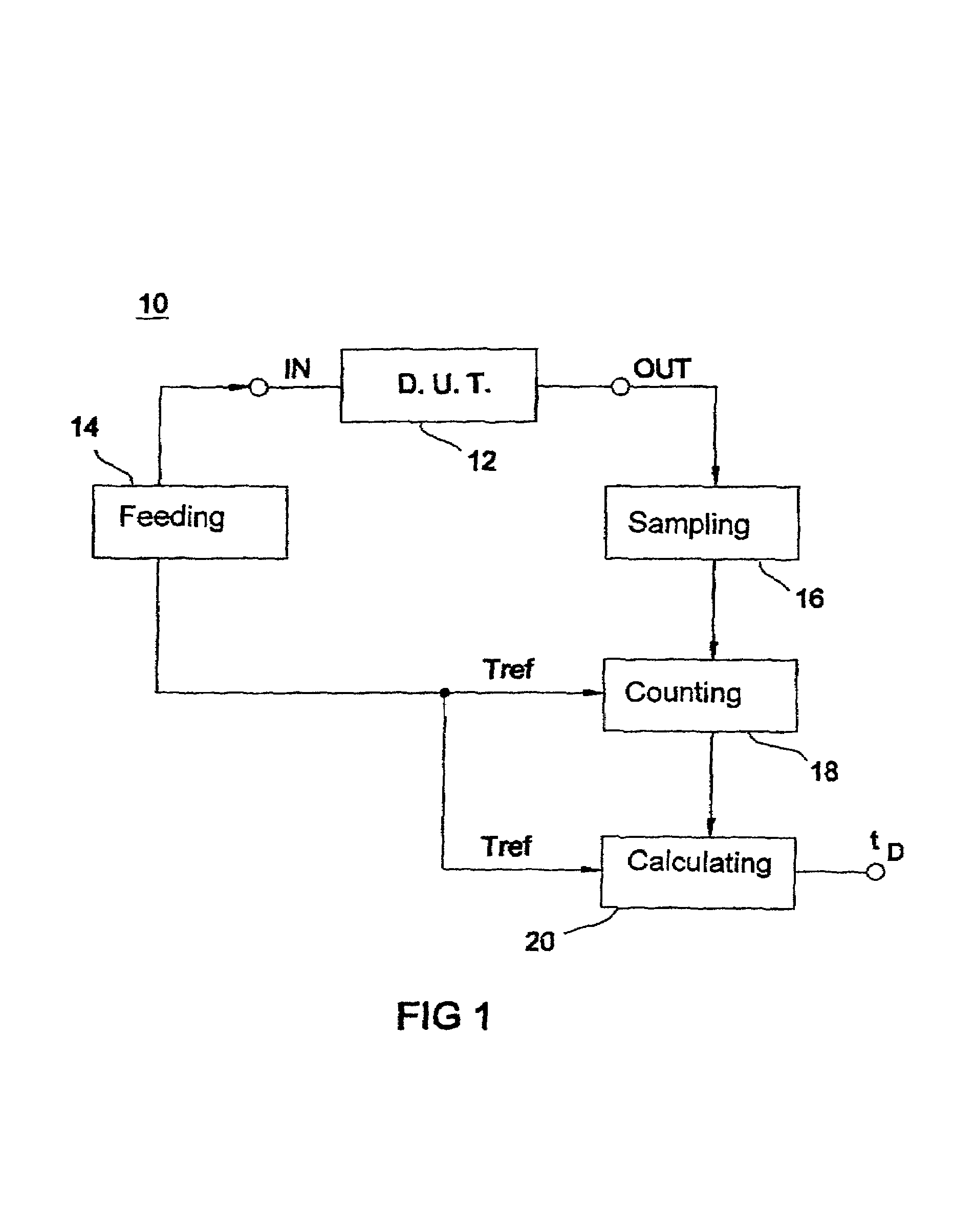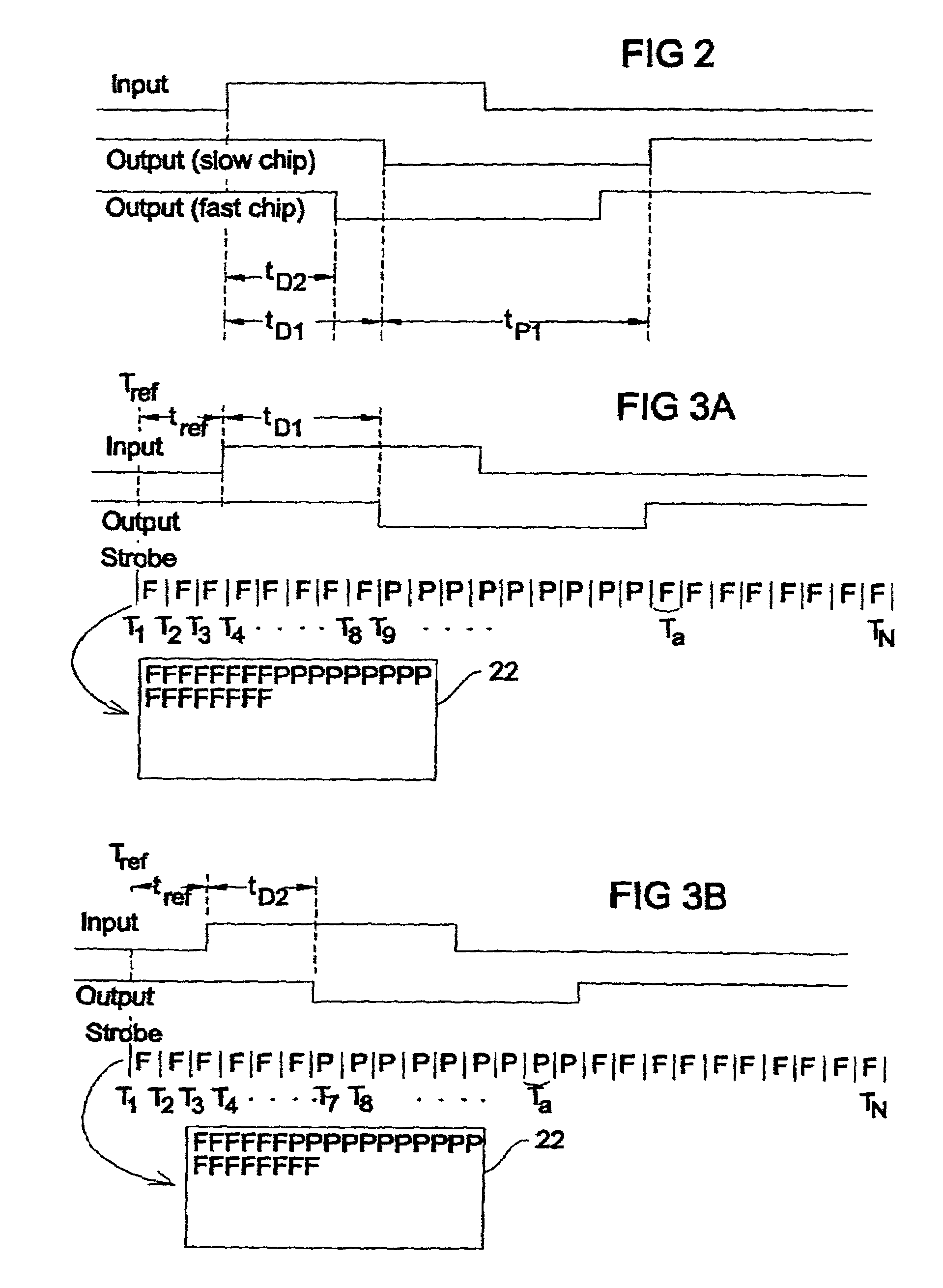Device for and method of examining the signal performance of semiconductor circuits
- Summary
- Abstract
- Description
- Claims
- Application Information
AI Technical Summary
Benefits of technology
Problems solved by technology
Method used
Image
Examples
Embodiment Construction
[0030]In the following, the inventive concept for detecting a delay time of a circuit, especially of an integrated semiconductor circuit, is detailed to be able to automatically determine the velocity of logic circuits.
[0031]In FIG. 1 a device 10 for detecting a delay time tD of a circuit under test 12 (DUT; DUT=device under test) is illustrated in principle. Thus the delay time subsequently called tD1 represents the relatively long delay time of a slow chip, while the delay time subsequently called tD2 represents the relatively short delay time of a fast chip. The device 10 comprises feeding means 14 to feed a test signal into the circuit under test 12 at the input side. The circuit under test 12 is connected to sampling means 16 at the output side, this means sampling the output signal of the circuit under test 12 at predetermined times T1, T2, . . . TN to obtain a sequence of sample values therefrom. The output of sampling means 16, at which the sequence of sample values is provi...
PUM
 Login to View More
Login to View More Abstract
Description
Claims
Application Information
 Login to View More
Login to View More - R&D
- Intellectual Property
- Life Sciences
- Materials
- Tech Scout
- Unparalleled Data Quality
- Higher Quality Content
- 60% Fewer Hallucinations
Browse by: Latest US Patents, China's latest patents, Technical Efficacy Thesaurus, Application Domain, Technology Topic, Popular Technical Reports.
© 2025 PatSnap. All rights reserved.Legal|Privacy policy|Modern Slavery Act Transparency Statement|Sitemap|About US| Contact US: help@patsnap.com



